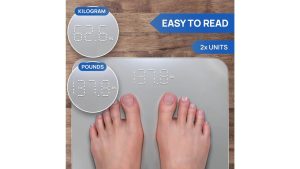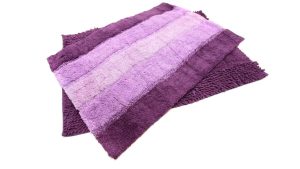To hook up a washer, first, connect the water hoses to the hot and cold water faucets. Then, attach the drain hose to the drain outlet.
Installing a washing machine can seem daunting, but with the right steps, it’s a straightforward task. Whether you’re setting up a new unit or reconnecting an existing one, following these guidelines can help you get your washer up and running efficiently.
By properly connecting the water supply hoses and securing the drain hose, you can ensure that your washer operates smoothly. In this guide, we will walk you through the necessary steps to hook up a washer and provide useful tips to make the process as seamless as possible. Let’s dive into the details to get your washer connected in no time.
Assessing Space And Requirements
When hooking up a washer, it’s crucial to assess the space and requirements beforehand to ensure a smooth installation process. This involves measuring the installation area dimensions, verifying power and water supply accessibility, and confirming drainage system proximity and compatibility.
Measure The Installation Area Dimensions
Before beginning the washer installation, take precise measurements of the space where the appliance will be placed. Consider the width, depth, and height, allowing adequate clearance for ventilation and maintenance access.
Verify Power And Water Supply Accessibility
Check the proximity of power outlets and ensure they are compatible with the washer’s power requirements. Similarly, inspect the location of the water supply and make sure it’s easily accessible for connecting the inlet hoses to the washer.
Confirm Drainage System Proximity And Compatibility
Examine the location of the drainage system to ensure it is within reach of the washer’s drainage hose. Additionally, verify that the drainage system is compatible with the washer’s requirements to avoid any potential issues.
Position And Leveling Tips
When it comes to hooking up a washer, ensuring the optimum position and proper leveling is crucial for efficient and effective operation. From choosing the right position to adjusting the feet for stable placement, here are the essential tips to ensure your washer is positioned and leveled correctly.
Choosing The Optimum Position For Efficiency
When positioning your washer, make sure it is placed on a level surface with enough clearance for proper airflow and easy access for maintenance. Consider placing the washer near a water source and a drain, ideally within a few feet of both to minimize hose length and reduce the risk of kinks or leaks. Additionally, position the washer in a location where it is easily accessible for loading and unloading laundry without any obstructions to the door or lid. It is also important to leave enough space around the washer for ventilation and to prevent it from being too close to walls or other appliances for proper operation and maintenance access.
Adjusting Feet For Stable And Level Placement
Once you have chosen the right position for your washer, the next step is to ensure it is level and stable. Start by adjusting the feet of the washer to achieve a stable base. Turn the feet clockwise to raise them and counterclockwise to lower them, ensuring each foot is adjusted to the appropriate height to eliminate any wobbling or rocking during operation. It’s essential to use a leveling tool to check the washer’s balance from side to side and front to back, making adjustments to the feet as needed until the washer is perfectly level. This not only ensures efficient operation but also prevents excessive vibration and noise during the wash cycle.
Essential Tips For Water Connection
Proper water connection is crucial when hooking up a washer to avoid leaks and ensure efficient operation. Follow these essential tips to correctly attach the cold and hot water hoses to your washing machine, preventing potential water-related disasters and ensuring a smooth laundry experience.
How To Hook A Washer Up: Avoiding Leaks
Leaks can be a homeowner’s nightmare, but proper installation can prevent these disasters. Here’s how to ensure your washer’s water connection is secure:
- Tighten the hose connections: Use a wrench to securely tighten the cold and hot water hoses to the corresponding faucets and washer connections, ensuring a snug fit without over-tightening to avoid damage.
- Inspect for wear and tear: Regularly inspect the water hoses for any signs of wear, such as cracks or bulges, and replace them immediately to prevent leaks.
- Position the washer properly: Make sure the washer is positioned level on the floor to prevent unnecessary strain on the hoses, which could lead to leaks.
Attaching Cold And Hot Water Hoses Correctly
The proper attachment of the cold and hot water hoses is crucial for the efficient and safe operation of your washing machine. Follow these steps to ensure the hoses are attached correctly:
- Identify the correct connections: Identify the cold and hot water faucets and corresponding connections on the washer.
- Connect hoses to the faucets: Attach the cold and hot water hoses to the matching faucets, ensuring a secure fit.
- Connect hoses to the washer: Securely attach the other end of the hoses to the corresponding cold and hot water connections on the washer, ensuring you tighten them properly but not over-tighten.
Drain Hose Installation Guidance
Proper installation of the drain hose for your washer is crucial to ensure efficient drainage and prevent water spillage issues. Follow these steps to correctly attach and secure the drain hose to your washer and drain.
Attaching The Hose To The Washer And Drain Securely
When attaching the drain hose to the washer, ensure a tight connection with the outlet on the back of the machine. Use a hose clamp to secure the connection and prevent any leaks or dislodging during the washing cycle. To secure the hose to the drain, make sure to insert it into the drain pipe or standpipe at least 6 inches but no more than 96 inches. Use a zip tie or a hose clamp if necessary to secure the connection. This will prevent the hose from popping out during the draining process.
Preventing Backflow And Water Spillage Issues
To prevent backflow, it’s essential to ensure the drain hose is not kinked or twisted. This can restrict water flow and cause backflow, resulting in water spillage. Use a hose support or elevate the hose to maintain a smooth and unrestricted flow. Regularly inspect the hose for any clogs, bends, or damage that may hinder proper water drainage. Cleaning the hose periodically can prevent potential backflow and water leakage issues.
Ensuring A Safe Installation
Installing a washer may seem like a straightforward task, but it’s crucial to prioritize safety to prevent potential hazards and ensure the efficient operation of your appliance. With a focus on safety, following these steps can guarantee a secure and successful installation.
Double-checking All Connections And Hoses
After hooking up your washer, it’s essential to inspect all the connections and hoses to verify their tightness and absence of leaks. Ensure you correctly connect and securely fasten the water supply and drain hoses to prevent any potential water damage caused by leaks. Double-checking these connections can save you from future headaches and unnecessary repairs.
Running A Test Cycle To Ensure Proper Operation
Once the installation is complete, running a test cycle is imperative to ascertain that the washer is functioning as intended. Take this opportunity to observe the washer’s performance, listening for any unusual noises, and checking for leaks during the cycle. This step guarantees that the appliance is in proper working order, providing peace of mind and preventing potential issues down the line.
Frequently Asked Questions Of How To Hook A Washer Up
Q: How Do I Hook Up A Washer To A Water Supply?
A: To hook up a washer to a water supply, start by turning off the water valves, connecting the hoses to the washer, and ensuring the connections are secure. Finally, turn on the water supply and check for any leaks.
Q: What Tools Do I Need To Hook Up A Washer?
A: You may need a pair of pliers, an adjustable wrench, and some Teflon tape to help secure the connections. These tools will assist in ensuring a tight and secure fit, helping to prevent any leaks during use.
Q: Why Is It Important To Level The Washer During Installation?
A: It is important to level the washer during installation to prevent excessive vibrations, noise, and potential damage to the unit. An unlevel washer can also lead to poor cleaning or inefficient water drainage during the wash cycle.
Q: How do I connect the water supply hoses to the washer?
A: To connect the water supply hoses, first, ensure the water faucets are turned off. Then, attach one end of each hose to the corresponding hot and cold water inlets on the back of the washer. Tighten securely to prevent leaks.
Q: Where does the drain hose go?
A: Position the drain hose securely in a standpipe or a laundry tub. Make sure it is not kinked or bent, and leave a gap to allow proper water drainage. Do not place the hose too far down the standpipe to prevent siphoning.
Q: How do I connect the power cord?
A: Plug the washer’s power cord into a grounded electrical outlet. Make sure the outlet is compatible with the washer’s power requirements, and avoid using extension cords to ensure a safe and reliable connection.
Q: Can I use any detergent for my washer?
A: We recommend using high-efficiency (HE) detergent for front-loading washers. Check the manufacturer’s guidelines for specific detergent recommendations. Using the right detergent helps maintain the washer’s performance and longevity.
Q: What should I do if my washer is vibrating excessively?
A: Excessive vibration may be due to an uneven load or an uneven surface. Ensure the washer is on a stable and level floor. Also, distribute the clothes evenly inside the drum to prevent imbalance during the spin cycle.
Q: Is it necessary to level the washer during installation?
A: Yes, leveling the washer is crucial for proper operation. Use a level to check if the appliance is evenly balanced. Adjust the leveling legs as needed to ensure stability and minimize vibrations during use.
Q: Can I connect the washer to a hot water supply only?
Conclusion
Hooking up a washer is a simple task that you can accomplish by following the steps outlined in this blog post. By ensuring proper connections and regular maintenance, you can maximize the efficiency and longevity of your washing machine. With these tips, you can keep your laundry routine running smoothly and hassle-free.






